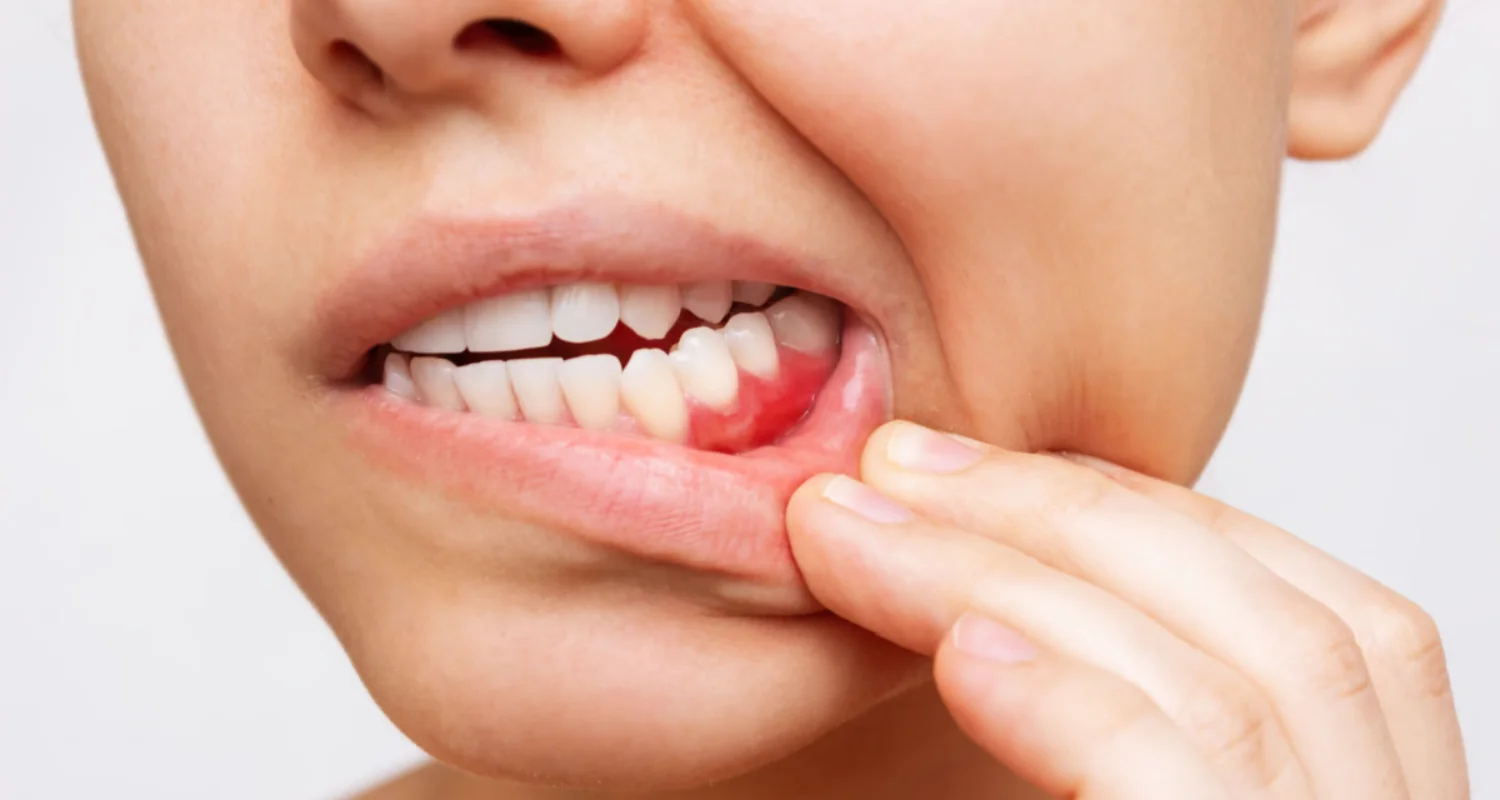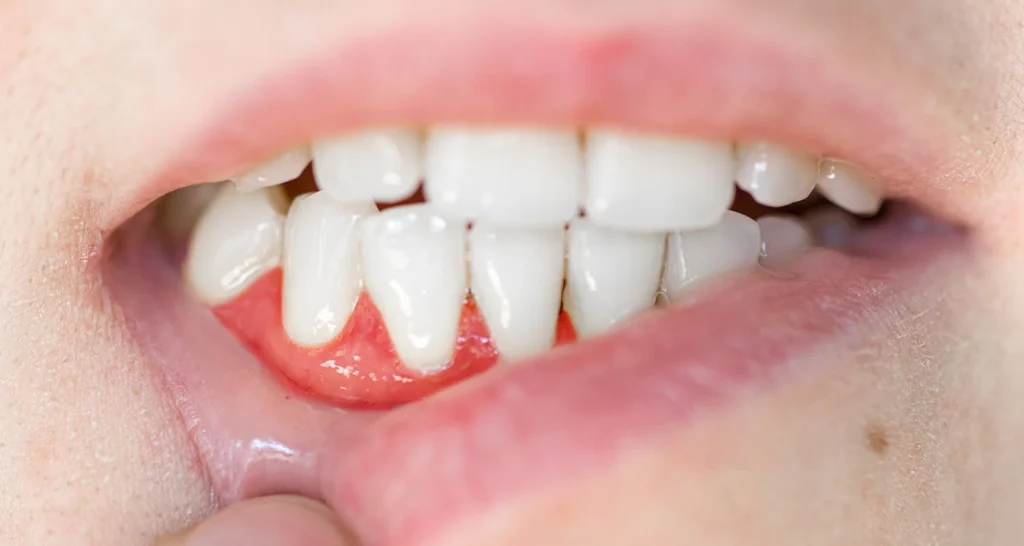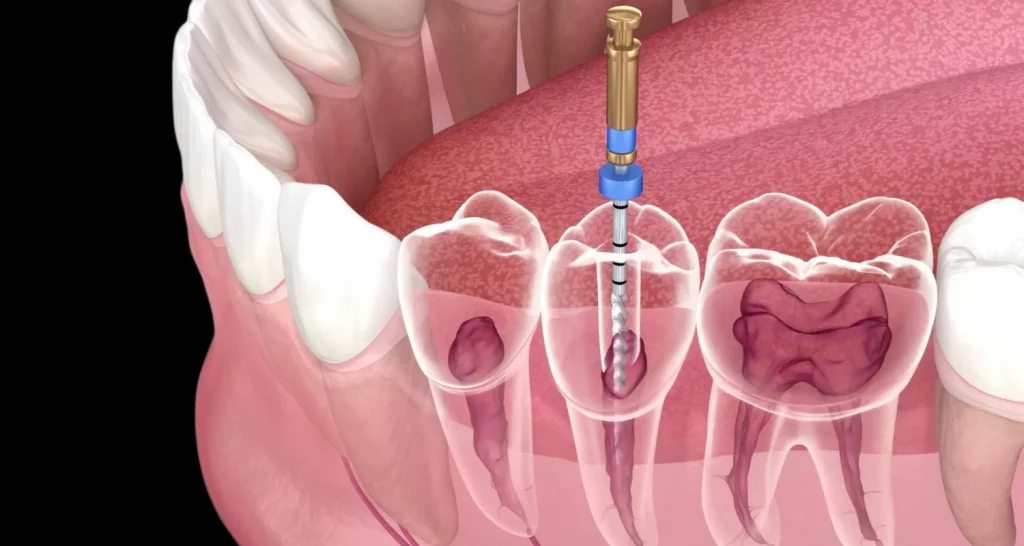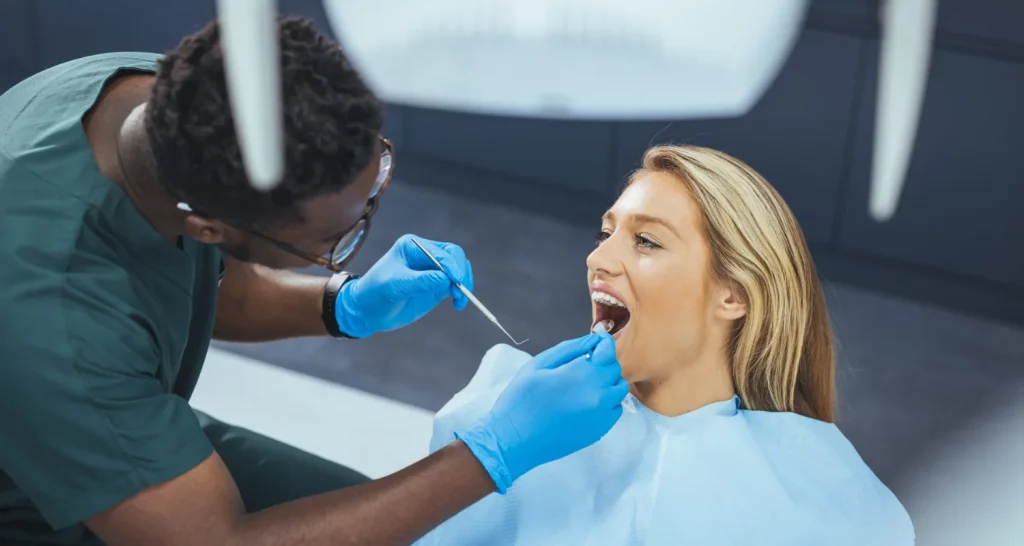Last Updated on: 10th December 2025, 06:22 am
You should never attempt to drain a tooth abscess at home. Doing so can lead to serious complications, including the spread of infection. Always consult a dentist. Home remedies may help ease pain but do not treat the underlying infection.
Dental abscesses are as common as they are painful. In fact, they represent one of the main reasons for an emergency dental consultation. Drainage of a dental abscess may seem like an easy procedure to perform, but the truth is that it is complex and risky.
How to Drain a Tooth Abscess at Home?
Before attempting to drain a dental abscess at home, it’s crucial to understand what it is. Let’s take a quick look at what a dental abscess is all about
What is a dental abscess?
A dental abscess is a soft, fluctuating pocket of pus that accumulates in oral tissues, either the gums or the jawbones. It happens when an infection originating in the nerve of the tooth or surrounding tissues advances without being treated in time.
What are the different types of dental abscesses?
There are 3 types:
● Periapical abscess: This type is located at the end of the root and below the tooth. It can be caused by cavities or a deep restoration, as well as trauma to the teeth.
● Gingival abscess: It can happen at the edge of the gum caused by foreign bodies embedded in it.
● Periodontal: It affects the bone that supports the tooth and can generate mobility. It is generated by the accumulation of bacteria on the surface of the roots of the teeth.
What are the symptoms of a tooth abscess?
Patients with dental abscesses may present one or more of the following symptoms:
● Severe, spontaneous, constant, throbbing dental pain that cannot be easily located
● Pain or discomfort when chewing, biting, or swallowing
● Swelling on one side of the face or neck
● Difficulty breathing
● Swollen and tender lymph nodes under the jaw or in the neck
● Bad smell and taste in the mouth
● Fever
Eventually, the abscess may drain by itself. When this happens, the patient may feel a foul-tasting and smelling salty liquid, engendering a sense of relief.
How is a tooth abscess professionally treated?
When a dental abscess occurs, the dentist focuses the treatment as follows:
1. Drain the contents of the abscess
Depending upon the location and origin of the abscess, it can be drained through:
● The gums, only applying pressure
● The canal of the tooth, by performing an endodontic treatment
● An incision in the mucosa .
When a required incision is needed, the dentist might take the following steps:
1. Anesthetic placement
2. Choice of drainage area
3. Sterilization and disinfection of the area
4. Creation of a drainage path through an incision
5. Drainage of the abscess
6. Salt water (saline solution) flushes inside the abscess
7. Cleaning of the area
Sometimes, it may be necessary to place a drainage device so the pus continues to come out in the days following the intervention. The drain will be withdrawn at a future appointment.
2. Eliminate the cause of the infection
The only way to achieve a permanent cure of an abscess is by eliminating the cause of the infection. If only the abscess is drained, it will go away for a few months; but it will return at another time, causing even more pain and swelling. Thus, depending upon the origin of the abscess, it may be necessary to perform one of the following procedures:
● Root canal treatment
● Removal of foreign bodies embedded in the gum
● Extraction of defective implant
3. Prescribe the appropriate antibiotic
Depending upon the severity and characteristics of the abscess, the dentist may prescribe antibiotics. It is important that these be administered carefully following the instructions given by the professional.
Can you drain a dental abscess at home?
No, draining an abscess at home is dangerous due to:
● A prior diagnosis is required: A dentist should determine the appropriate time to drain the abscess; if this is attempted at the wrong stage of the disease, it can lead to complications.
● The pus must be removed in its entirety: The professional uses instruments and movements that allow him to eliminate all the pus inside the abscess.
● The area where the incision will be made must be carefully chosen: The area where the incision is made is key to guaranteeing the proper drainage of the abscess and adequate subsequent healing.
● Often, the placement of sutures or drainage mechanisms is required: Depending upon the severity of the abscess, additional procedures may be needed.
● The infection could spread: A poor drainage technique can cause the infection to migrate to other parts of the body, endangering the general health of the patient.
● The implements used must be completely sterile: The surgical instruments used in the dental office are subjected to very sophisticated disinfection processes not possible to achieve at home.
In any case, the abscess should be treated only by a highly experienced dental surgeon, endodontist, or dentist to ensure the success of the treatment and reduce the risk of complications.
What home remedies can relieve a tooth abscess?
Home remedies cannot cure an abscessed tooth permanently. However, some can be applied at home to help reduce pain and inflammation:
1. Cold water compresses placed on the inflamed area.
2. Black tea: Apply a concentrated tea infusion with a cloth.
3. Salt and baking soda rinses: In a glass with warm water, mix one tablespoon of salt and one of baking soda. Rinse for 30 seconds 3 times a day.
4. Fenugreek tea: Prepare the tea by boiling 1 teaspoon of ground fenugreek in a cup of water. Let the mixture cool and apply with a cotton ball to the affected water, repeating the process 3 times a day.
5. Tea tree oil: Dilute a tablespoon of the oil in a glass of water and use it as a rinse 3 times a day. It works best on abscesses that are not advanced.
6. Clove: Create a paste by mixing one tablespoon of water and 1 teaspoon of clove powder. Then, apply it to the affected area and leave it on for 15 minutes. Repeat three times a day.
7. Apple vinegar: Dilute 2 tablespoons of vinegar in a glass of water and rinse for 5 minutes. Repeat twice a day.
How to care after draining an abscess?
● Take the prescribed antibiotics and anti-inflammatories according to the medical instructions.
● Keep the area clean and free of bacteria.
● Apply ice or cold compresses on the area to relieve swelling and pain.
If you experience any unusual or persistent symptoms, contact your dentist for guidance.
Will a dental abscess go away on its own?
It is important to note that dental abscesses never go away without treatment. Although the pain and swelling may subside on their own for a few days, the symptoms may return at a later time, causing even more discomfort. In the same way, dental pain can decrease in cases where decay or some trauma causes nerve death inside the tooth.
However, even if there is no discomfort, the infection will remain active and continue to spread, which can be dangerous. Therefore, it is advisable to consult the dentist even if the severity of the symptoms has decreased.
When should you see a dentist?
Seek immediate dental care if you experience:
Persistent tooth pain or swelling
Fever or chills
Difficulty breathing or swallowing
Swollen lymph nodes
Pus drainage in your mouth
In emergencies, go to the hospital or call urgent dental services.
Conclusion
Attempting to drain a dental abscess at home is not advisable due to the significant risks involved. This procedure requires accurate diagnosis, sterile tools, and specialized techniques that only a professional can provide. Self-drainage can lead to severe complications, such as the spread of the infection.
Instead of taking risks, it’s crucial to seek specialized dental care immediately upon experiencing symptoms of an abscess. Home remedies may temporarily relieve pain but do not replace the need for proper and timely medical treatment.
Frequently Asked Questions
Is it safe to drain a dental abscess at home?
No, it is not safe to drain a dental abscess at home due to the complex and sterile techniques required. Proper drainage needs an accurate diagnosis, precise incision placement, and complete pus removal, which can only be performed safely by a dental professional to avoid complications such as infection spread.
What should I do if I think I have a dental abscess?
If you suspect you have a dental abscess, seek immediate dental care. Symptoms like severe, throbbing pain; swelling in the face or neck; fever; or a bad taste in the mouth are urgent signs that require professional evaluation and treatment to prevent health risks.
Can I use home remedies to treat a dental abscess?
While home remedies like salt-water rinses or cold compresses can help reduce discomfort and inflammation, they are not cures for a dental abscess. Home treatments can be used to provide temporary relief while waiting for dental treatment, but they cannot replace the need to address the underlying infection with professional dental care.
What are the risks of untreated dental abscesses?
Untreated dental abscesses can lead to severe complications, including the spread of the infection to other parts of the body, which can be life-threatening. The infection will not go away on its own and can cause increasing pain, swelling, and potentially systemic issues if not properly treated.
How do dentists treat dental abscesses?
Dentists treat dental abscesses by draining the pus through a safe and sterile procedure that may involve incisions or root canal treatment, depending on the abscess type. After draining, antibiotics are often prescribed to help clear the infection, and follow-up care is crucial to ensure healing and prevent recurrence. Additionally, the dentist will identify and treat the cause of the infection to prevent future abscesses.
Can I drain a tooth abscess myself at home?
No, draining a tooth abscess at home is dangerous and can spread infection. It's best to see a dentist for proper treatment.
Share:
References
1. Abscess. (s/f). Mouthhealthy.org. https://www.mouthhealthy.org/en/az-topics/a/abscess
2. Abscessed teeth. (Aug 10, 2017). American Association of Endodontists. https://www.aae.org/patients/dental-symptoms/abscessed-teeth/
3. Home Oral Care. (s/f). Ada.org. https://www.ada.org/resources/research/science-and-research-institute/oral-health-topics/home-care.
4. Jay, K. (Feb 12, 2018). Home remedies for abscess tooth: 10 remedies for swelling and pain. Healthline.https://www.healthline.com/health/home-remedies-for-abscess-tooth
5. Dental Abscess. Ada.com. https://ada.com/es/conditions/dental-abscess/
6. Tooth abscess. (Jun 29, 2022). Mayo Clinic. https://www.mayoclinic.org/diseases-conditions/tooth-abscess/symptoms-causes/syc-20350901
-
Nayibe Cubillos M. [Author]
Pharmaceutical Chemestry |Pharmaceutical Process Management | Pharmaceutical Care | Pharmaceutical Services Audit | Pharmaceutical Services Process Consulting | Content Project Manager | SEO Knowledge | Content Writer | Leadership | Scrum Master
View all posts
A healthcare writer with a solid background in pharmaceutical chemistry and a thorough understanding of Colombian regulatory processes and comprehensive sector management, she has significant experience coordinating and leading multidisciplina...





















